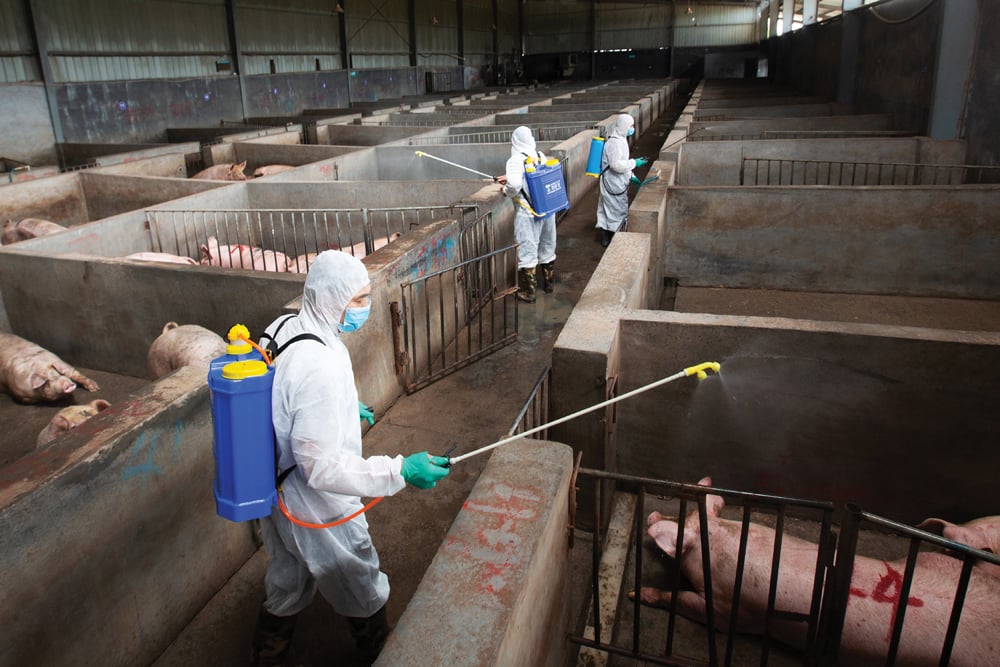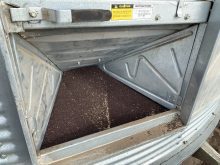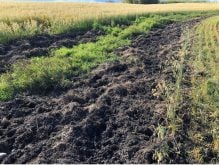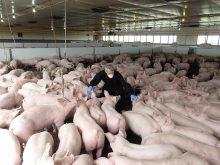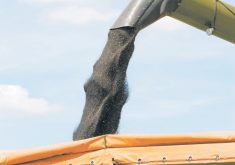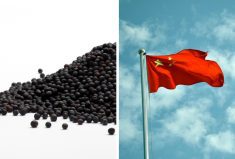The world may be one step closer to a workable vaccine for African swine fever (ASF), but one expert warns that a local debut is a long way off — if the vaccine makes it to Canada at all.
According to a research article, recently published in a Chinese science journal, researchers out of the Harbin Veterinary Research Institute have developed a vaccine that they say is safe and effective in lab conditions.
The paper describes the vaccine as a live attenuated vaccine based on one of the first ASF strains to be found in China.
Read Also

Mazergroup’s Bob Mazer dies
Mazergroup’s Bob Mazer, who helped grow his family’s company into a string of farm equipment dealerships and the main dealer for New Holland machinery in Saskatchewan and Manitoba, died July 6 from cancer.
Why it matters: Various labs are reporting progress in developing a vaccine for ASF, but it will take time to get these products to farmers.
Dr. Egan Brockhoff, veterinary consultant with the Canadian Pork Council, says the paper is good news, if only because it signals the lab’s confidence in the effectiveness of their vaccine, but is unlikely to change anything in Canada for the coming months.
“The researchers have taken the time to generate a research paper and, in doing that, it’s not necessarily just an announcement,” he said. “It is a bit more of a robust declaration that they feel they’ve moved this technology along to a space that’s going to be able to take them further down the line.”
The study does touch on several inevitable questions experts might have about the safety and efficacy of the vaccine, Brockhoff added, although he said there is still some due diligence to be done.
Among those questions, he noted, researchers did start to address whether or not the vaccine runs the risk of becoming a new source of infection.
The study did not find any replication of the virus in organs, limited virus replication in the lymph nodes and claims that animals cleared all traces of the vaccine within two weeks, the website PigProgress later reported.
“With these live, attenuated vaccines, one of the concerns has been they could revert back to virulence,” Brockhoff said. “So far in their study that they’ve published, they haven’t found any evidence of reversion to virulence, but that’s still a fairly short, narrow window. I think that will be something that the world is going to want to watch with this vaccine.”
Hurdles yet
Researchers in China have not said when any commercial vaccine might be available.
Scaling up to commercial production remains a major challenge, Brockhoff noted, even if every other requirement is met.
The Canadian veterinarian pointed to current issues in setting up a cell line, which would allow researchers to grow enough virus in lab conditions, and therefore enough antigen, to scale up the vaccine commercially. So far, researchers around the globe have been largely limited to harvesting virus from actual infected animals.
“That’s not a sustainable option to scale up a vaccine,” Brockhoff said. “You have to be able to take the virus, transfer it to a cell line. That cell line can then be put in a large vat, a large greenhouse if you will, to grow the virus to sufficient quantities to create lots of virus to attenuate for a vaccine.”
Among other problems, those producing a vaccine will eventually run out of live hosts to harvest from, assuming the vaccine is successful, he noted.
It is also not clear if the vaccine would change much to the Canadian landscape, even if it came into play in China.
The biggest impact to Canada would be a sharp decrease in the risk of exposure, should China get a handle on its ASF outbreak, Brockhoff said.
Ongoing concerns
North America in general has been on high alert for the last year, due to fears around ASF. In 2019, the federal government announced new funding for more sniffer dogs at airports, while industry groups, government and other actors throughout North America have been regularly working to develop a strategy for the disease.
Brockhoff argued, however, that a vaccine is unlikely to make its way into common usage in Canada, even if one is developed in China and approved for use on this side of the ocean.
“Because we export 70 per cent of our production, our first response was always going to be to contain and eliminate the virus from the country,” he said. “We were never likely to use a vaccine.”
ASF is also not PEDv (porcine epidemic diarrhea), he said.
Manitoba’s struggle with PEDv in recent years is well published. In 2017, PEDv went from 10 cases total since the virus was first confirmed in Manitoba, to 80 in a single year. In 2019, again, cases skyrocketed to 82, raising new questions on how the virus spreads, since the industry had made significant changes to animal transport and biosecurity following the outbreak two years earlier.
In comparison, Brockhoff said, ASF has proven far less easy to spread, making enhanced biosecurity practices more likely to be effective and, in contrast, tools like ring or strategic vaccination less applicable.
“This is not a highly infectious virus at all,” he said. “This is a lethal virus, so almost everything — over 90 per cent of infected animals — die, but it’s not a highly contagious virus, so that’s a good news story.”
The news out of China should also not signal other labs to back off their own research, he noted.
In early 2020, the American Society for Microbiology and U.S. Department of Agriculture also said they had a candidate for a viable vaccine. That vaccine, the news service Bloomberg later reported, was proving 100 per cent effective against the strain currently devastating the Asian pork industry.
“I don’t think we want to be in a situation where there’s a single vaccine available around the world,” Brockhoff said. “I still think we want to be in the situation where multiple parties have spent the investment and have created a viable vaccine so we don’t get in a bottleneck situation.”






